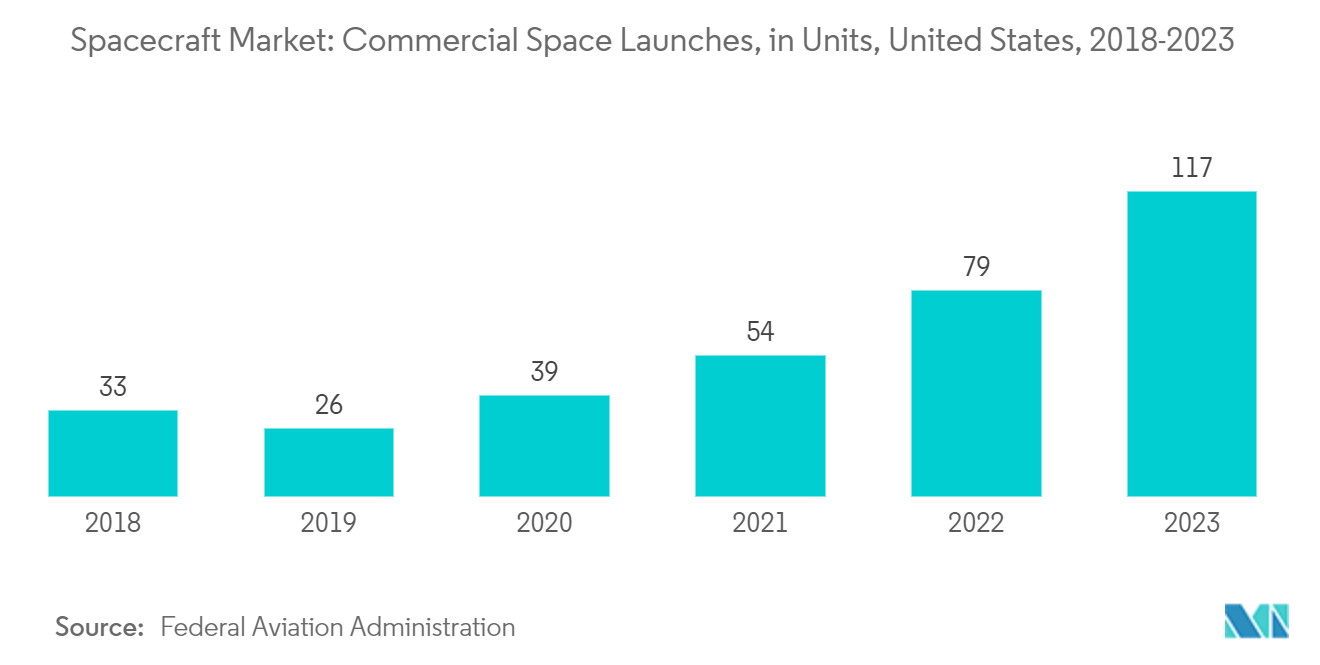Market Trends of Spacecraft Industry
Unmanned Spacecraft to Dominate Market Share During the Forecast Period
The unmanned spacecraft segment is projected to continue its dominance during the forecast period. The growth is attributed to the increasing expenditure on the space sector and increasing satellite launch programs from space agencies across the globe. The segment includes revenues from the launch of satellites, cargo transportation spacecraft, and spacecraft to deploy land rovers for planetary exploration missions.
- Over the past few years, satellite launches have increased to support various applications. Satellite launches are expected to grow in the coming years to support multiple applications, including military, commercial (like telecommunication), space exploration, etc. For instance,
- The US Space Development Agency, established in 2019, announced its plan to launch nearly 1,000 satellites in orbit by FY 2026.
- In December 2022, Space Cargo Unlimited, a Luxembourg-based company, signed a contract with ThalesAleniaSpace to develop a reusable unmanned spacecraft that will be used for production in orbit. Under the agreement, the REV1 spacecraft will make its maiden flight in 2025. The spacecraft, the size of a compact car, can carry up to 1,000 kg of payload.
- Thus, the growing expenditure on the space sector and the development of robotic spacecraft are expected to drive the growth of the market during the forecast period.

North America to Dominate the Market During the Forecast Period
North America is expected to dominate the spacecraft market during the forecast period. This is majorly due to rising expenditure on the space sector, increasing number of satellite launches for commercial and defense applications, and growing space exploration activities from NASA and SpaceX.
- In 2022, the US Government spent approximately USD 62 billion on its space programs, making it the country with the highest space expenditure in the world.
- In 2022, there were a total of 186 orbital launches taking place, and the United States topped the list with 87 launches. Out of the total launches, 61 were performed by SpaceX. The company carried out 60 launches of the Falcon 9 rocket and one launch of the Falcon Heavy rocket.
- In addition, Canada is increasing its focus on enhancing space capabilities and designing and developing advanced manned and unmanned spacecraft for various missions.
- The Canadian Space Agency (CSA) released its 2022-23 Departmental Plan, which plans to spend USD 388.3 million for its upcoming 2022-23 fiscal year. For instance, in April 2023, Canada proposed to develop a robotic lunar rover for Artemis. The Canadian government announced its intent to spend USD 1.2 billion million for thirteen years to create a 'lunar utility vehicle' that supports human exploration of the moon. Developments such as these are projected to drive the growth of the spacecraft market in North America in the coming years.


